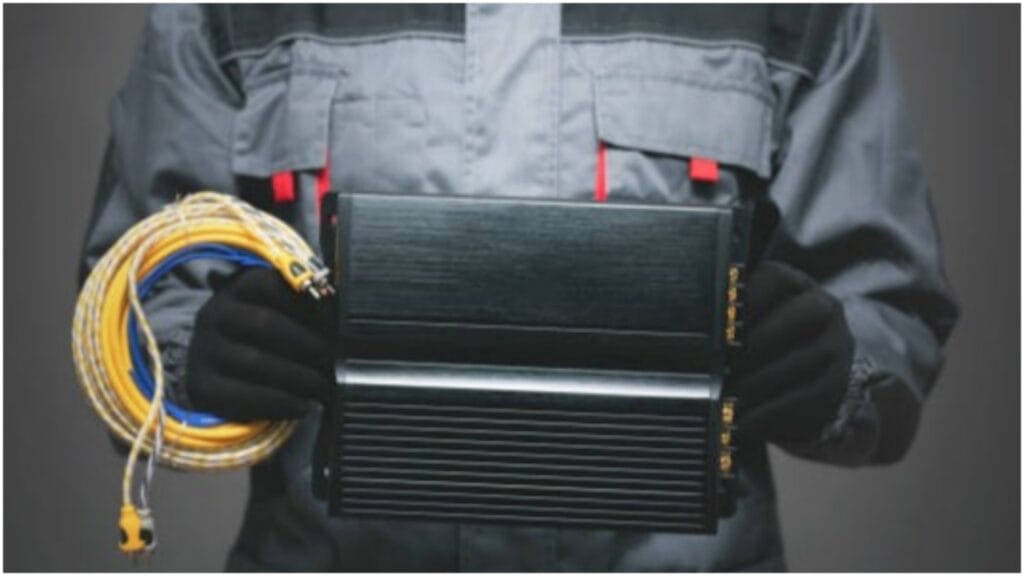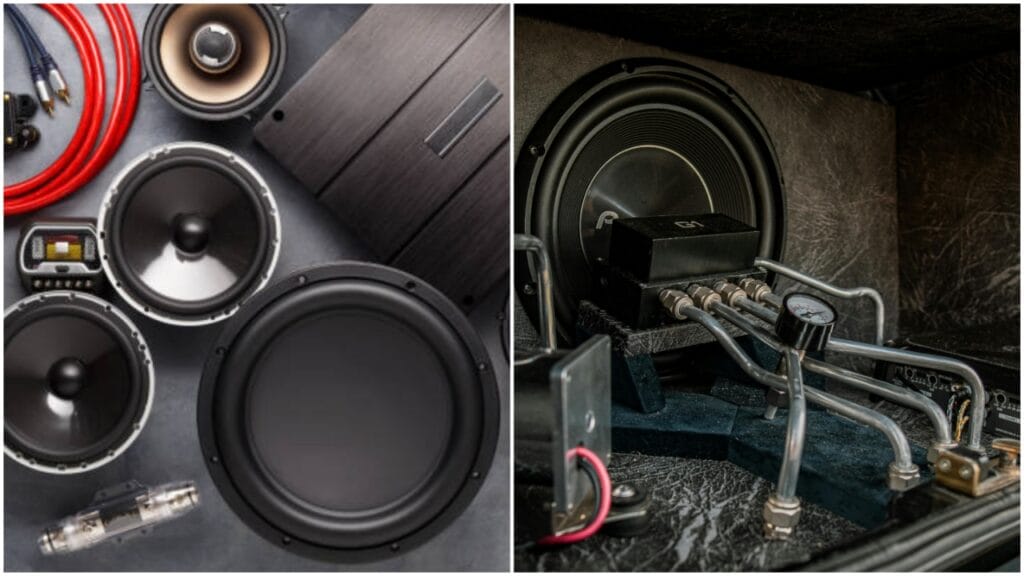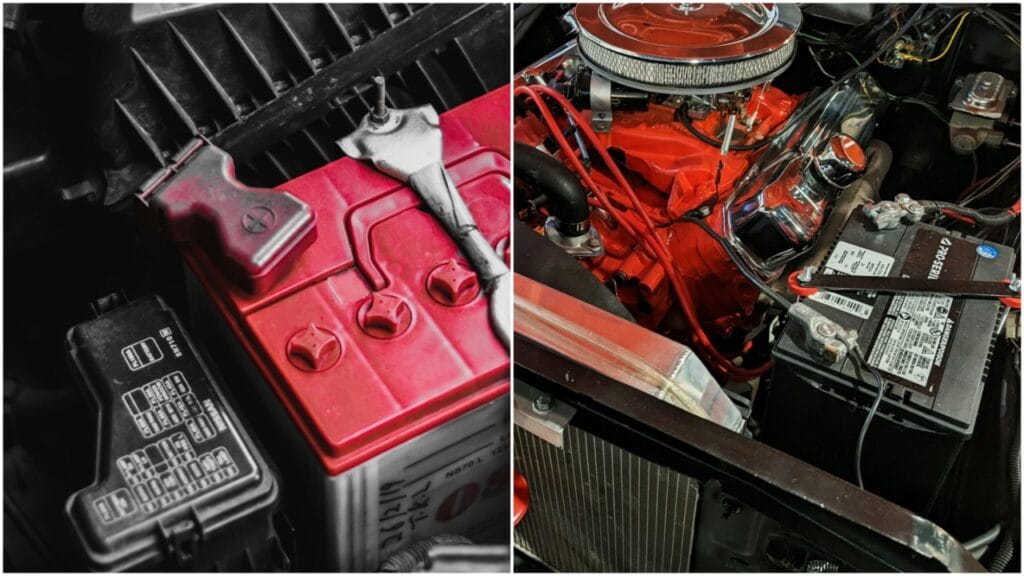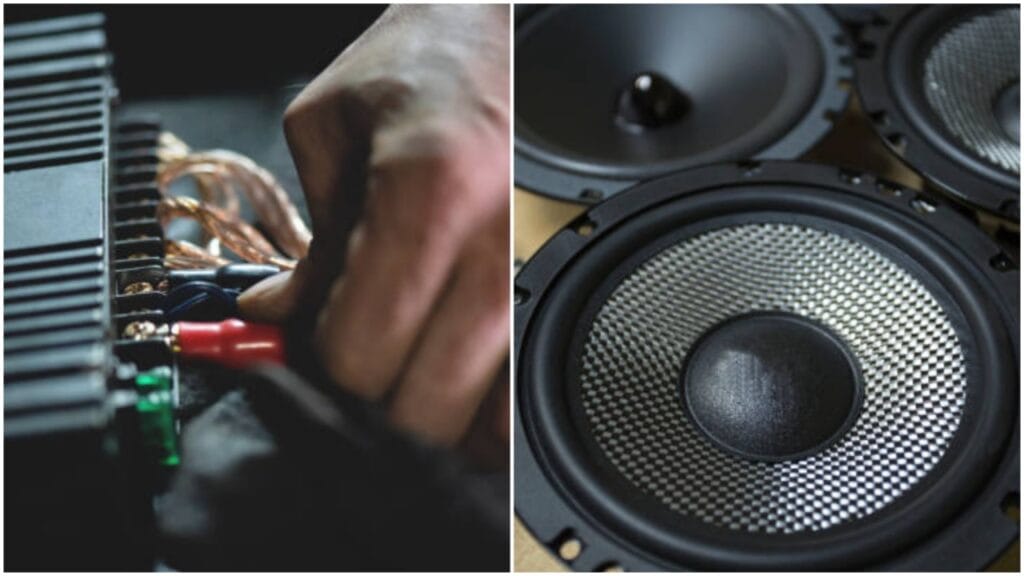To connect a subwoofer without an Outward amplifier, use a Driven subwoofer that includes its own built-in amp. Link it to your car stereo using RCA cables if your head unit has a subwoofer output. If not, connect it to the rear speaker wires—many powered subs accept speaker-level inputs directly.
Run a power wire from the battery and a remote turn-on lead from the stereo. This method keeps Setup simple and adds deep bass with Tiny effort.
The Simple Setup
Use a powered subwoofer—it has its own built-in amplifier. Connect it to your car stereo using RCA cables if available, or plug directly into rear speaker wires (most powered subs accept speaker-level inputs). Run a 12V power wire from the battery and a remote turn-on lead from the stereo. No extra amp, no Intricate wiring—just clean, deep bass with the Least effort.
The Benefits of Going Amp-Free

Opting for an amplifier-free subwoofer setup—using a powered (active) subwoofer—offers a streamlined, professional-grade solution without compromising audio quality. It eliminates the need for external amplifiers, complex crossovers, or extensive wiring, reducing both installation time and system clutter.
Ideal for vehicles with factory head units, this approach maintains OEM integrity while delivering tight, controlled bass. With built-in signal processing and thermal protection, modern powered subs ensure reliable, high-fidelity performance—making them a smart, space-efficient choice for clean, effective audio upgrades.
The Realities of Going Amp-Free
Here's where I need to be honest with you. Connecting a subwoofer without an amp is always a smart move.
Still, there are some definite downsides. For starters, the sound quality will be different from the stuff of legends.
A subwoofer without an amp is like a sandwich without the filling. It can get the job done but won't blow you away.
Amps give the bass extra punch and depth, making it sound full and rich. Without them, the bass feels thin.
It'll still be there, but hit those low notes with a different authority. Volume is another consideration.
Think of your stereo's output as a limited power source. When you run a subwoofer off your car stereo, you share that power between all speakers.
You can feel the bass. Still, shaking the mirrors is not enough, and it does not give that powerful vibration in your seats.
It's okay for a little extra thump, but you'll probably notice the difference if you're a bass enthusiast.
Connecting It All Up
Alright, let's talk connections. Here's what you'll need for a basic, no-frills setup.
First, find the subwoofer outputs on your stereo if they're available. If you don't see them, you'll have to access the wiring for the rear speakers.
Either way, you'll need to splice the wires or use a line-out converter to draw power for the subwoofer safely.
This process will look slightly different depending on your car and stereo model. Having a wiring diagram can be a big help.
This little device will help if you go the line-out converter route. It converts the speaker-level signal to something the subwoofer can handle.
This prevents it from blowing out. Think of it as a buffer—it ensures the power you're sending is safe and manageable for the subwoofer.
Will It Last?

If you're using a stock stereo, you're putting extra strain on it by driving a subwoofer. Stereos weren't designed to drive subs directly; they're mostly built to handle the car's standard speakers.
So, if you push your stereo too hard, you risk shortening its lifespan. The last thing you want is a blown stereo just because you were looking for more bass.
I'm not saying this will happen overnight. Plenty of people go amp-free for years with no issues. But remember that there's always a trade-off when you're working outside the intended setup.
Why Some People Love Amp-Free Subwoofer Setups
If you're someone who likes simplicity, this is for you. You're probably not after a concert experience—just a bit more oomph in your everyday listening.
For that, the amp-free setup works just fine. It's quick, budget-friendly, and lets you enjoy a subtle bass boost without hassle.
There's also a charm in keeping things low-key. Not everyone wants their car rattling with deep bass. Sometimes, you want to feel the music, not overwhelm it.
This setup provides a middle ground. It offers more bass than the stock setup without a full-on bass assault.
So, Is It Right for You?
It depends. Are you looking for something that will impress audio enthusiasts? If so, an amp is a must.
If you're on a budget, going amp-free is just the ticket. You also prefer amp-free if you like the simplicity of minimal wiring.
It is ideal if you want more bass to make your drives more enjoyable.
Ask yourself: What's my goal here? Do I want to feel the music a little more? Or do I want the bass to be a defining feature of my sound system?
No right or wrong answer exists, but being clear about what you want will help you decide. This clarity will determine whether this setup is a good fit.
Final Thoughts

Connecting a subwoofer to a car stereo without an amp can work, but it's only for some.
The setup is easy. You'll save money and space in your car, but it won't shake the windows.
This setup is ideal for the casual listener. It suits someone who wants a taste of low-end richness without committing to a complete, high-powered system.
If you're willing to accept the limitations, then go ahead and give it a try. Who knows? You find that a bit of bass is all you need to make every drive more enjoyable.
And if you ever decide you want more, there's always room to add an amp later.
Understanding Power Limitations
Going amp-free means your subwoofer only has as much power as the stereo can give it. Most stock car stereos pump less energy than an amplifier.
Your subwoofer will work, but it won't reach the volume or depth you imagine when you think of "subwoofer."
The car stereo's power is split among all speakers, which can impact sound quality. Your bass will be noticeable but manageable.
Playing with Sound Quality
Without an amp, expect subtle bass rather than head-shaking intensity. Your subwoofer will add depth, but it's softer.
It provides more of a gentle bass undertone than the chest-thumping effect of an amp-driven sub.
This setup can work well if you prefer smooth, clear sounds without the heavy vibrations.
With this setup, you get bass that blends nicely with other sounds. For casual listeners, this can be enjoyable and balanced.
This is a good choice if you're all about clean sound without overwhelming bass.
Lower Stress on Your Battery

Running without an amp does give one real advantage: your car battery. Amps draw a lot of power.
This can quickly drain your car's battery, mainly if you use a high-powered one. Without an amp, you're saving that power and sparing your battery some stress. Your stereo alone is less demanding.
This setup uses less energy, which means there is less chance of the headlights dimming and less risk of the battery running low if you listen with the engine off.
Exploring Wiring Simplicity
A significant plus of this setup is the ease of installation. Wiring an amplifier means routing extra cables, finding a solid mounting spot, and ensuring the power connections are correct. It can take time and precision to get it all perfect.
Without an amp, it's a more straightforward process. You connect your subwoofer directly to your stereo or speakers, and you're good to go.
There is less hardware to manage, and it's a DIY-friendly approach that doesn't require an engineer's touch.
Thinking about Future Upgrades
Connecting a sub without an amp can be a stepping stone. It lets you explore your audio preferences and see how much bass you want.
If you decide later that you need more impact, adding an amp becomes an easy upgrade.
It's a flexible approach. If you crave a fuller sound, you can enjoy a subtle bass and ramp things up later.
This adaptable setup allows you to expand or enhance your system over time without a total overhaul.
The Sweet Spot of Amp-Free Setups
If you're a laid-back listener, this setup is just proper. It's for those who want a little more fullness in their music without going all-out on an audio system.
It adds depth but keeps things mellow, which is ideal for those who like to keep it easygoing.
Knowing When It's Not Enough
But, and it's a big "but," there are limits. Running a subwoofer without an amp feels like settling if you're a true bass lover.
You won't get the room-filling resonance that amps create, and the bass will lack power.
Hardcore bass fans usually need an amp to get the deep, rich sound they're after. For those who want the whole experience, the extra power from an amp is essential.
In the End, It's All About Your Needs

Choosing to go amp-free is really about finding what works for you. You may not need high-impact bass or be on a budget.
Simplicity is more important than perfect sound. Connecting a sub without an amp is a practical choice that can satisfy everyday music lovers.
Conclusion
Connecting a subwoofer to a car stereo without an amp can be simple and budget-friendly. It is a way to add bass to your audio system but it has its trade-offs.
Without an amp, you'll enjoy a cleaner setup with fewer wires. You'll also gain from lower power consumption and less strain on your car's battery.
This can make the installation easy. It is ideal for those who want extra bass without shaking the car.
Yet, the lack of an amp limits the power and depth of your bass. The subwoofer will hit those deep, booming notes with a different intensity.
As a result, the bass is light. It can also seem less dynamic. For casual listeners, this setup provides just enough enhancement.
But for true bass enthusiasts, it will feel lacking. Ultimately, connecting a subwoofer without an amp is about balance.
You get more bass than stock speakers alone, yet sacrifice the full, resonant sound an amplifier brings.
FAQ's
To connect a subwoofer to a stereo system, use the subwoofer output or RCA pre-outs from the receiver. Plug into the subwoofer’s line-in jack. Set crossover frequency around 80Hz for balanced bass. Powered subwoofers need AC power. For older systems, speaker-level inputs may be used. Always check polarity for clean sound.
To connect a car subwoofer, run RCA cables from the stereo to the amp, then speaker wire from the amp to the subwoofer. Use a power kit with a fuse for safety. Ground the amp properly. Set gain and crossover for clean bass. Factory stereos may need a line output converter.
You can connect a subwoofer without an amp by using a powered subwoofer. Just plug it into your stereo’s RCA or speaker outputs. Adjust the volume and crossover for smooth bass. Some models even support Bluetooth—great for a clean, wire-free setup. Simple, quick, and no extra gear needed!
To wire 4 speakers to a 2-channel amp, connect each pair in parallel to one channel. Use 4-ohm speakers to keep a safe load. Match polarity for clear sound. Check amp’s minimum impedance rating. It’s a budget-friendly way to boost audio!
Yes, you can connect a subwoofer to an original car stereo using a line output converter (LOC). It converts speaker signals to RCA outputs. Then connect to a powered subwoofer or amp. It’s a smart way to upgrade the bass without replacing the head unit.
An active subwoofer does not require an external amplifier—it has a built-in amp. Simply connect it to your stereo’s RCA or speaker-level outputs. It’s ideal for clean Setups, saving space and cost. Many models Present auto-on, adjustable crossover, and volume control for seamless integration and optimal bass performance.

